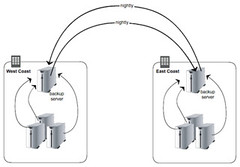What if Cars Were Rented Like We Hire Programmers?
 Wednesday, January 16, 2013 at 9:30AM
Wednesday, January 16, 2013 at 9:30AM 
Imagine if you will that car rental agencies rented cars like programmers are hired at many software companies...
Agency : So sorry you had to wait in the reception area for an hour. Nobody knew you were coming to today. I finally found 8 people to interview before we can rent you a car. If we like you you may have to come in for another round of interviews tomorrow because our manager isn't in today. I didn't have a chance to read your application, so I'll just start with a question. What car do you drive today?
Applicant : I drive a 2008 Subaru.
Agency : That's a shame. We don't have a Subaru to rent you.
Applicant : That's OK. Any car will do.
Agency : No, we can only take on clients who know how to drive the cars we stock. We find it's safer that way. There are so many little differences between cars, we just don't want to take a chance.
Applicant : I have a drivers license. I know how to drive. I've been driving all kinds of cars for 15 years, I am sure I can adapt.
Agency : We appreciate your position, but we can only take exact matches. Otherwise, how could we ever know if you could drive one of our cars?
Click below to see how the story ends, but you probably already know the ending...















 This is a guest post by
This is a guest post by 



